As our jeep climbed the winding road of the Apuan Alps, the landscape transformed before my eyes. The famous white mountains of Carrara aren’t snow-capped peaks but massive marble quarries that have supplied the world with pristine white stone for centuries. These legendary Carrara marble quarries in Tuscany are where Michelangelo himself hand-selected the perfect blocks for his masterpieces, including the statue of David.
The scale of these quarries is truly breathtaking. Massive cuts in the mountain reveal brilliant white walls that shimmer in the sunlight. Enormous blocks of marble wait to be transported down to the processing plants that line the roads between Pietrasanta and Carrara. The constant movement of trucks and wheel loaders shows that this ancient industry remains very much alive today.
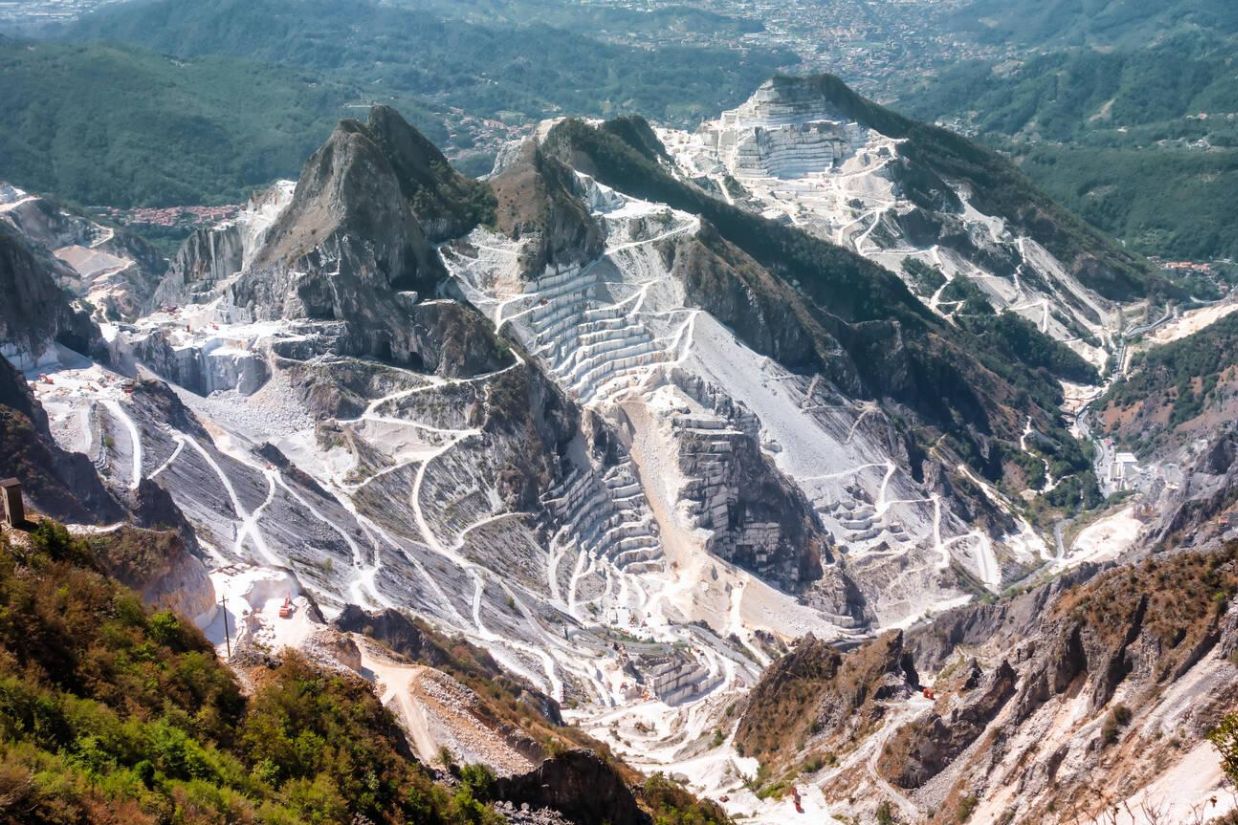
My adventure took me deep into the heart of these marble caves with a local guide whose family had worked the quarries for generations. The cool air inside the mountain and the smooth marble surfaces told stories of both nature’s artistry and human determination. If you’re planning a trip to Tuscany, don’t miss this opportunity to explore the source of some of history’s greatest sculptures and buildings.
Unveiling Carrara: A Historical Overview
Nestled in the Apuan Alps of Italy, Carrara’s marble quarries have been a source of artistic inspiration and valuable stone for over two thousand years. The pristine white marble from these mountains has shaped human history and art in ways few materials have.
From Ancient Times to the Present
The Romans first discovered Carrara’s magnificent white marble around the 1st century BCE. They called this area Luna, and the stone quickly became prized throughout the empire for its purity and strength. I was amazed to learn that many ancient Roman structures still standing today feature Carrara marble.
During the Renaissance, Carrara exploded in importance. The quarries became a center of commerce as demand for the perfect stone grew across Europe. Wealthy families and powerful churches commissioned works made from this distinctive marble.
What struck me most while researching was how little the extraction methods changed over centuries. Until the 1800s, workers used the same basic techniques as ancient Romans – wedges, hammers, and pure human strength to free the stone from the mountain.
Today, modern technology has transformed the process, but Carrara remains the marble capital of the world. Over 5 million tons of marble are extracted annually from these mountains.
Michelangelo’s Stone of Choice
Michelangelo’s relationship with Carrara marble became legendary. He spent months in these mountains, personally selecting the perfect blocks for his masterpieces. I was fascinated to discover he called Carrara marble “the stone of light” because of how it seemed to glow from within.
His most famous works, including the Pietà and David, were carved from carefully chosen Carrara marble blocks. Michelangelo believed this particular marble held a certain luminosity and purity that other stones lacked.
The artist’s dedication was extraordinary. He would brave treacherous mountain paths and harsh conditions to find the perfect stone. Local stories tell of Michelangelo sleeping in the quarries, developing a deep connection to the mountain itself.
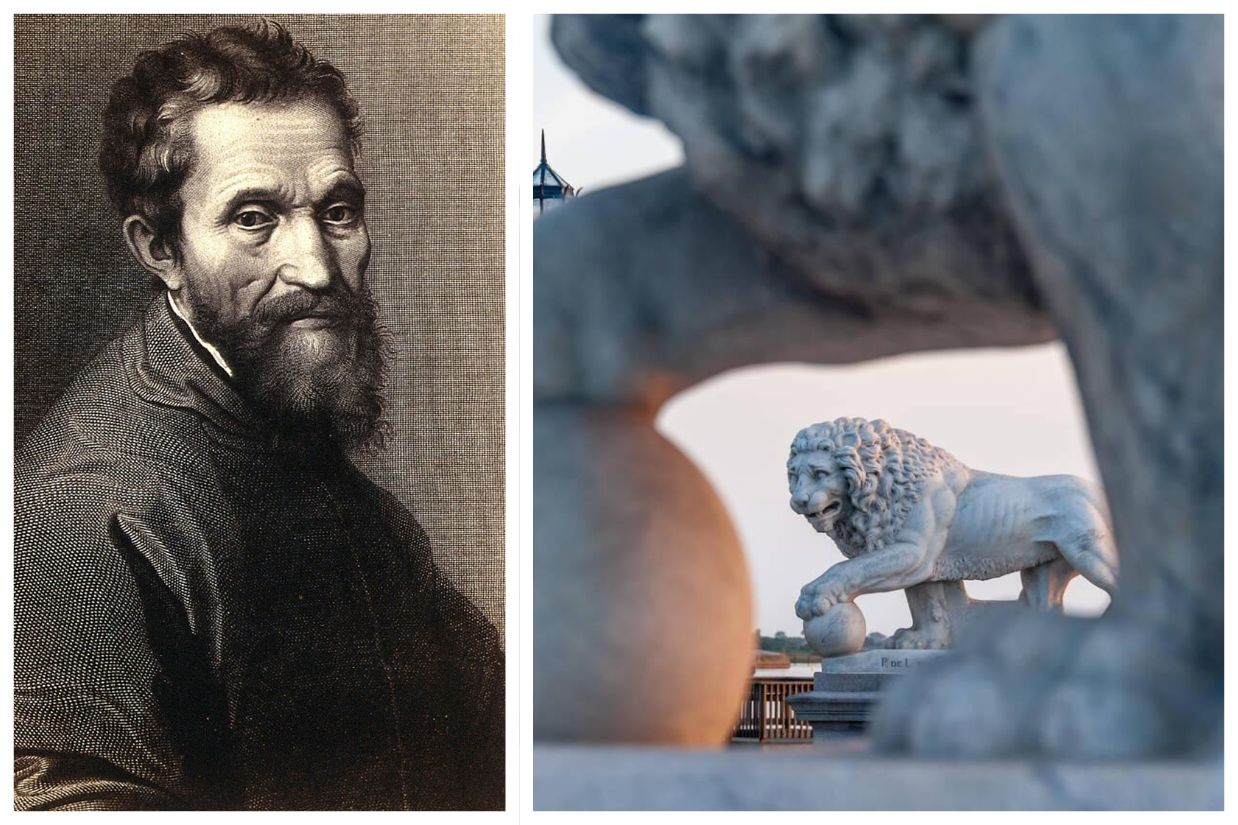
His passion for Carrara marble helped establish it as the premier artistic medium of the Renaissance. Even today, sculptors from around the world make pilgrimages to these quarries, following Michelangelo’s footsteps in search of their perfect block.
The Marvel of Marble: Geology and Extraction
The white gold of Carrara comes from an incredible natural process spanning millions of years. These gleaming stones hold both geological wonder and human ingenuity in their crystalline structure.
Formation and Characteristics of Carrara Marble
Carrara marble formed through an amazing geological process called metamorphism. About 30 million years ago, ancient limestone deposits underwent intense heat and pressure when the African and European tectonic plates collided, creating the Apuan Alps.
This natural compression transformed simple limestone into crystalline marble. What makes Carrara marble special is its exceptional whiteness and fine grain. During my visit, I ran my fingers across a freshly cut slab, feeling its cool, slightly sugary texture.
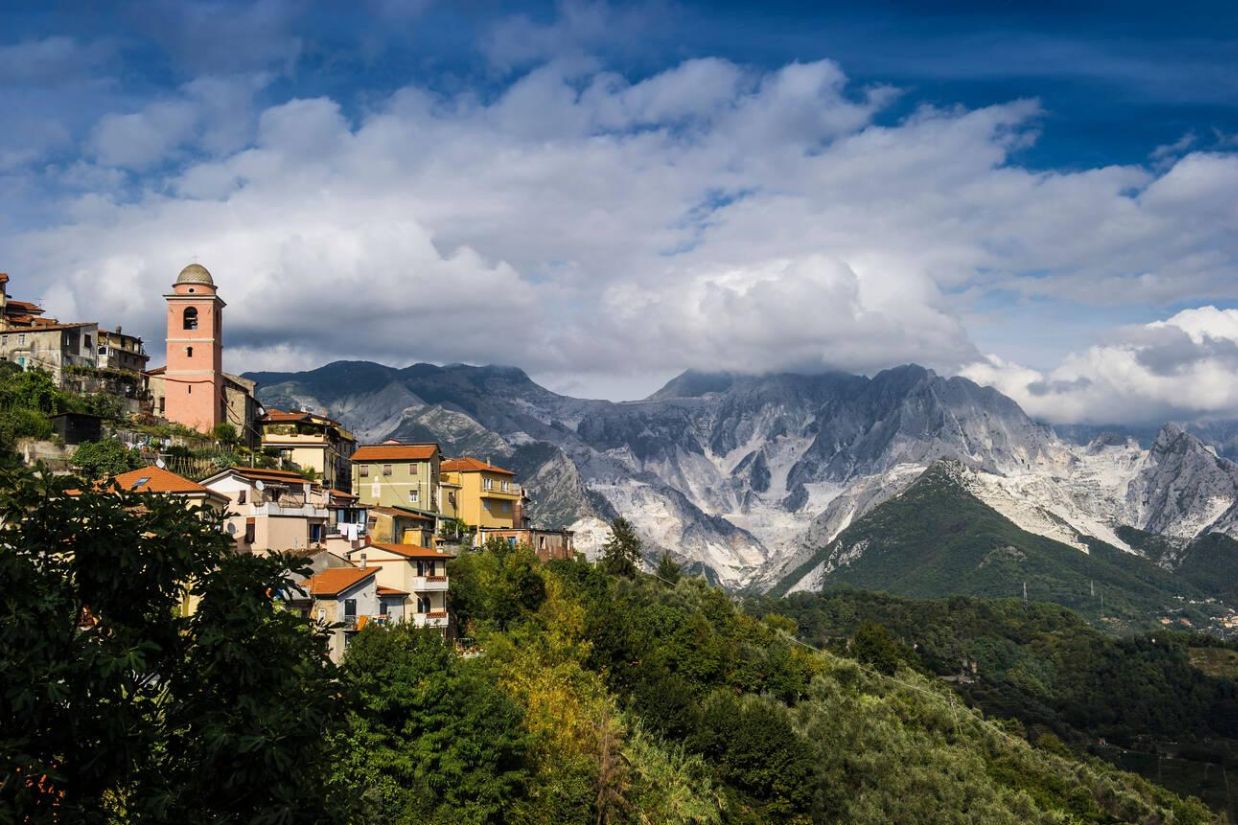
The marble is categorized into different varieties based on color and pattern. The most prized is “statuario” – nearly pure white with minimal veining, perfect for sculptures. I was amazed to learn that the quarries contain different grades within the same mountain.
Quarrying Techniques: Past and Present
The Romans were the first to extensively quarry Carrara marble, using basic tools and incredible persistence. They’d drive wooden wedges into natural cracks, soak them with water, and let the expanding wood split massive blocks free.
Today’s extraction methods blend tradition with technology. Modern quarrymen use diamond wire saws that slice through marble like cheese. I watched in awe as these thin cables, coated with industrial diamonds, cut perfect blocks from the mountainside.
Heavy machinery now does the work that once required hundreds of laborers. Massive excavators and specialized trucks navigate the quarry’s steep roads. But despite these advances, quarrying remains dangerous work.

Only about 25% of extracted marble is usable for fine applications. The rest becomes aggregate for building materials. Standing on the quarry edge, I could see how generations of extraction have literally reshaped these magnificent white mountains.
A Journey Through the Quarries
My expedition into Carrara’s marble quarries was nothing short of breathtaking. The vast landscape of white-streaked mountains revealed centuries of human ingenuity and artistic potential waiting to be uncovered.
The Majestic Marble Mountain Ranges
The Apuan Alps stand tall and proud, their white faces gleaming under the Tuscan sun. As our Land Rover climbed the winding roads, I was struck by how these mountains aren’t just beautiful—they’re a living museum of human achievement.
Carrara’s quarry landscape is divided into three main basins: Torano, Fantiscritti, and Colonnata. Each area has its own character and history of marble extraction dating back to Roman times.
The mountains themselves tell stories. Centuries of cutting have created a dramatic, stepped appearance that resembles ancient amphitheaters carved into the mountainside. Some quarry faces tower over 300 feet high!
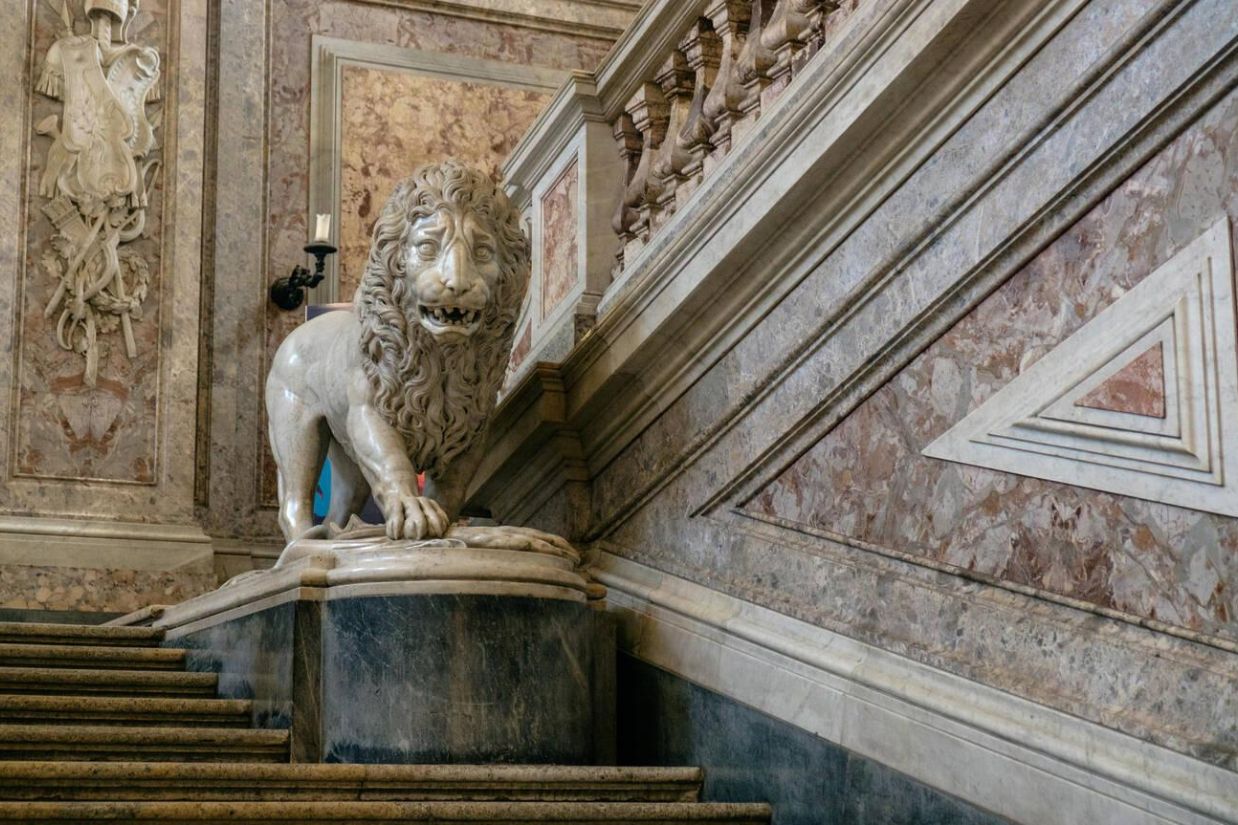
Walking among these giants, I felt tiny yet connected to something eternal. The same stone that Michelangelo once touched continues to be harvested today.
The Art of Marble Extraction
Modern extraction methods blend tradition with technology in fascinating ways. Gone are the days of hammers and wedges alone—though these tools still have their place.
Today’s quarrymen use diamond wire saws that cut through marble with remarkable precision. These wires, coated with industrial diamonds, slice through stone like a hot knife through butter.
I watched in awe as massive blocks—some weighing up to 20 tons—were carefully separated from the mountain face. The process requires patience and expertise developed over generations.
The sound of machinery echoes through the quarries, but there’s an underlying respect for the stone. Quarry workers know exactly where to cut to preserve the marble’s integrity.

Water plays a crucial role too. It cools the cutting wires and reduces dust, creating stunning white runoff streams that cascade down the quarry faces.
Sculptor-Worthy Finds: Veins and Quality
Not all Carrara marble is created equal. The most prized variety, called “statuario,” has a pure white background with minimal veining—perfect for sculptors seeking unblemished canvases.
My guide pointed out various qualities in the quarry walls. “See this section? The blue-gray veins mean it’s ‘bardiglio,’ while those golden streaks indicate ‘calacatta gold’—one of our most expensive types.”
Marble hunters search for particular vein patterns and color consistency. A single misplaced vein can determine whether a block becomes a masterpiece sculpture or kitchen countertops.
I learned to spot the telltale signs of quality: uniform color, minimal fractures, and tight crystalline structure that catches light beautifully. The quarrymen tap blocks with special hammers—a clear ring indicates solid marble without hidden cracks.
The most fascinating aspect? No two pieces are identical. Each slab tells its own geological story, formed over millions of years.
Experiencing Carrara: Tips for Travelers
Visiting Carrara’s marble quarries offers a fascinating glimpse into the world of this precious stone. The right planning and local knowledge can transform your quarry experience from good to unforgettable.
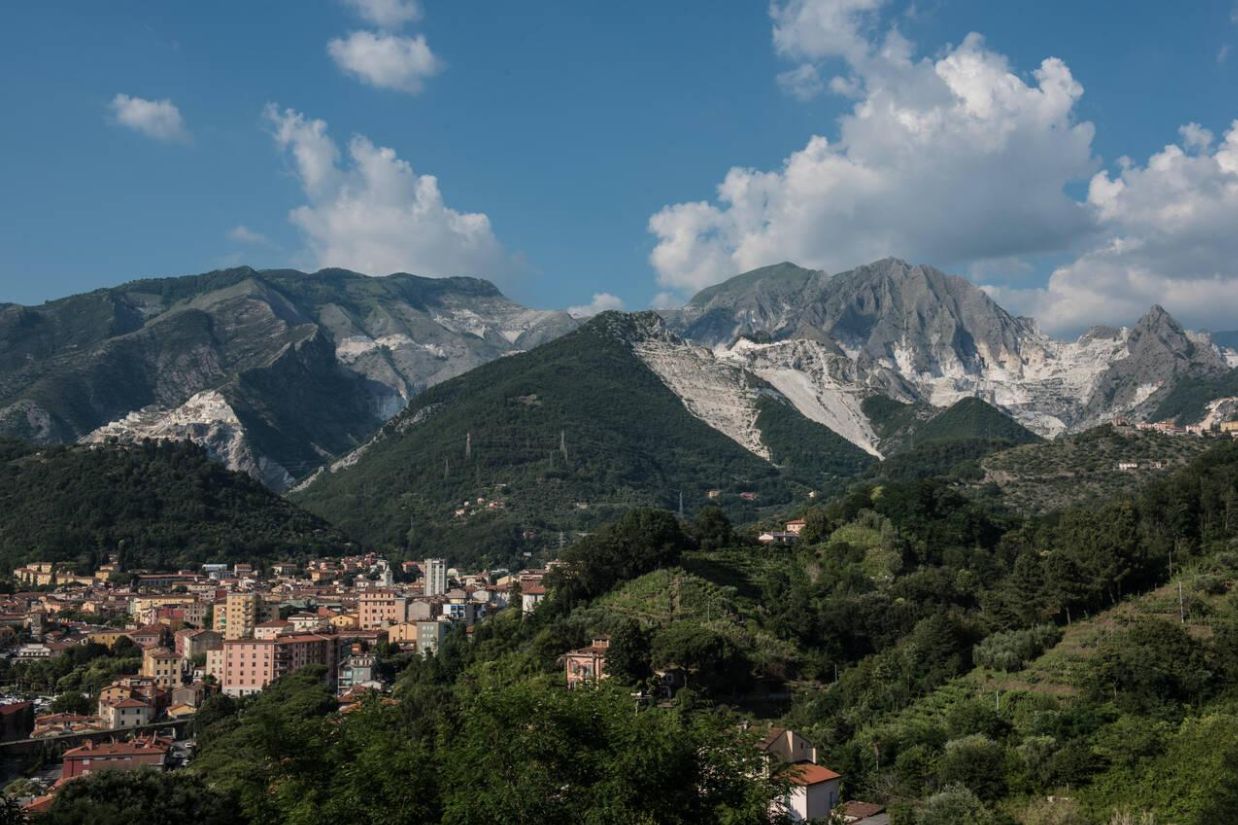
Planning Your Visit
The best time to visit Carrara is between April and October when the weather is mild and quarry operations are in full swing. I recommend allocating at least a full day to properly explore the area.
Most quarries are open Monday through Friday, with some offering weekend tours by reservation. Booking a guided tour in advance is essential, as self-guided options are limited for safety reasons.
You can choose between small group tours (€25-40 per person) or private excursions (€80-150). The Cava Museo and Galleria Ravaccione are must-see attractions that provide excellent context about marble extraction.
Wear sturdy shoes, bring a light jacket (even in summer), and don’t forget your camera! The temperature inside quarries can be significantly cooler than outside.
Navigating the Quarries Safely
Safety is paramount when visiting active quarry sites. Always follow your guide’s instructions and stay on designated paths.
Most tours provide hard hats and safety vests. Wear them throughout your visit. The terrain is uneven and can be slippery, especially after rain.
Jeep tours offer the most comprehensive experience, taking you deep into the quarry landscape. These 4×4 vehicles are specially equipped to handle the steep, rugged roads.
If you’re driving yourself to the quarry entrance points, be aware that GPS can be unreliable in the mountains. Get detailed directions from your accommodation.
Children under 8 may not be permitted on certain tours due to safety regulations.
Cultural Insights: Living Among Marble
Carrara’s identity is completely intertwined with marble. Take time to explore the town itself, where even street curbs are made from marble remnants.
Local cuisine reflects the quarry workers’ traditions. Try “lardo di Colonnata” – pork fat cured in marble basins – a delicacy that fueled generations of quarrymen.
The town hosts the Marble Weeks festival in July, featuring sculptures, exhibitions, and demonstrations by artisans. It’s a perfect opportunity to see how marble transforms from raw stone to art.
Visit local workshops where artisans continue centuries-old traditions. Many offer demonstrations or short courses for visitors interested in marble carving basics.
The locals are proud of their heritage and often eager to share stories about family connections to the quarries. Don’t hesitate to strike up conversations in cafés or shops.
Beyond the Quarries: Carrara’s Marble in Art
Carrara marble has shaped the course of art history far beyond the boundaries of the quarries themselves. This luminous stone from the Apuan Alps has been transformed by human hands into some of the world’s most breathtaking masterpieces.
Michelangelo’s David: An Icon of Marble Mastery
When I stood before Michelangelo’s David in Florence, I was stunned to think this 17-foot masterpiece began as a block from Carrara. The great Renaissance master personally visited these quarries to select his marble, believing the perfect sculpture already existed within the stone.
His relationship with Carrara was intense and personal. Michelangelo would spend months in the mountains, sleeping rough while searching for flawless blocks. The stone he chose for David had actually been rejected by other sculptors as too difficult to work with.
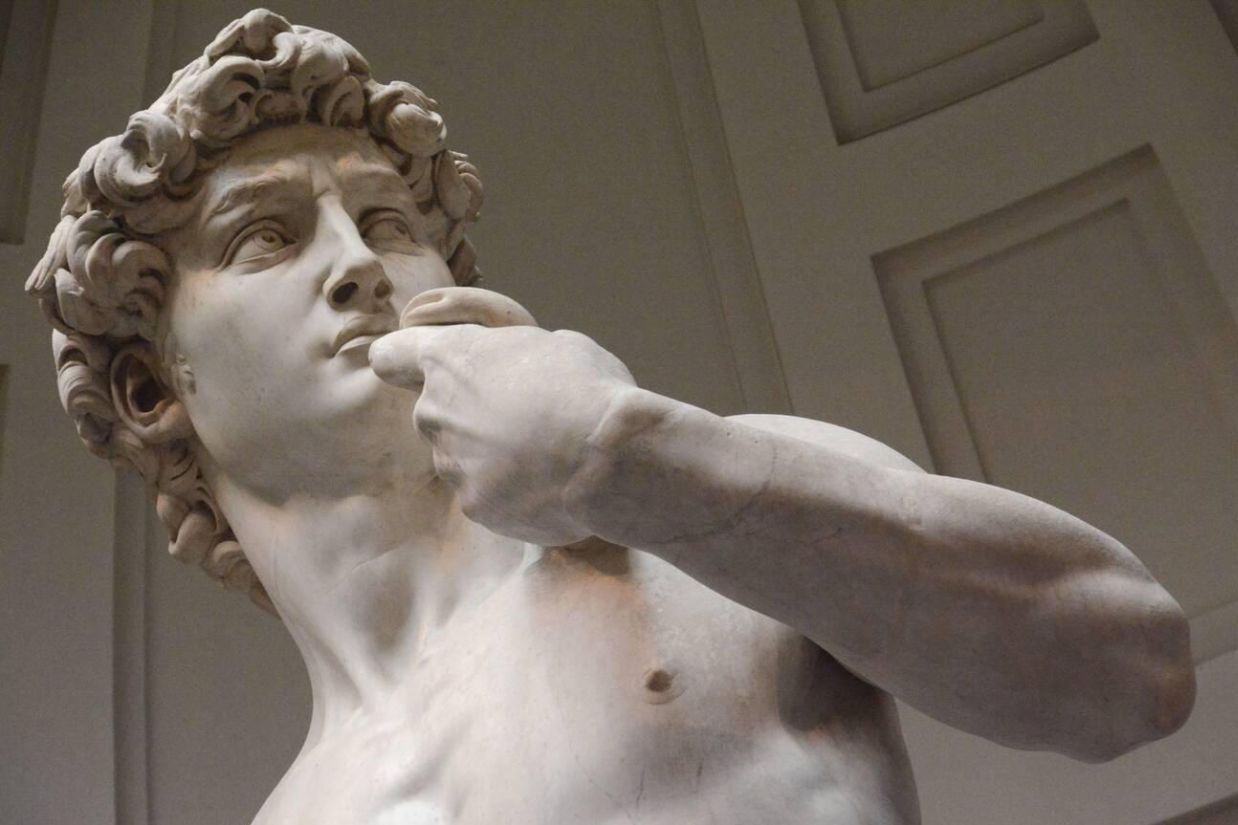
What amazes me most is how he transformed this raw material into such lifelike detail – the tension in David’s muscles, the veins in his hands, the thoughtful expression. It’s a testament to both the quality of Carrara’s marble and Michelangelo’s unparalleled vision.
Contemporary Creations: Carrara’s Influence on Modern Art
Today’s artists still use Carrara’s stone, but they now approach it with new perspectives. During my visit, I watched contemporary sculptors using both traditional chisels and modern tools like diamond-tipped saws.
The marble workshops around Carrara buzz with creativity. Artists from around the world come for residency programs, working alongside local artisans who’ve inherited generations of knowledge about the stone.
What struck me was the diversity of modern works. Some artists honor classical traditions, while others push boundaries with abstract forms that challenge our perceptions of what marble can become.
Several galleries in Carrara showcase these contemporary pieces. I was particularly moved by installations that contrasted rough-hewn blocks with polished, finished surfaces – a visual reminder of the transformation from mountain to art.

